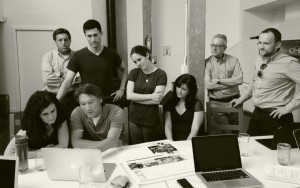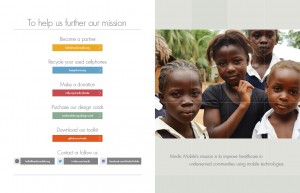Lester Ng (Graphic Design & Packaging ’85) has been a graphic designer and brand visionary for 29 years. His career began as a designer at Sidjakov, Berman & Gomez. While working under the renowned mentor Niclolas Sidjakov, he managed packaging and branding programs for clients such as 3M, Nestle, Del Monte and Sara Lee. Subsequently, as a creative director at Foote Cone & Belding (FCB), San Francisco, he developed and managed a design team responsible for POS and sales materials for Levis Strauss & Co., Hewlet Packard and Dunn & Bradstreet. Working with campaigns created by the insightful writing and direction of Mike Kelker at FCB, he developed a complete understanding of what makes a brand succeed. In 1995 he founded Ng Design where he currently develops and positions many new and emerging brands in the market by combining critical creative thinking and smart design to companies who believe in a vision for their products and services. As a pro bono creative consultant for the Taproot Foundation, he has been lending his expertise to non profits representing: the arts (Marin Theatre Company), sustainable land (Marin Agricultural Land Trust), and most recently global health (Medic Mobile).
How Can Design and Communication Advance the Mission of Social Enterprise?
Purpose driven design challenges
 When I graduated Art Center in 1985, the Mac had just been born, cassette players were the only portable way to listen to music and birds weren’t angry. Through the years, graphic design has gone through many transitions, all from game-changing technologies. In retrospect, what has remained constant has been my journey to find a purpose for everything I design. Today, the world is truly a different place, driven by transitioning economies. In 1985, we were emerging from the industrial economy into an information economy, and now we are transitioning into what Aaron Hurst calls the “Purpose economy”. Propelled by new sectors and organizations in the social enterprise space, impact design, technology and social purpose are merging together to solve some the greatest global humanitarian challenges.
When I graduated Art Center in 1985, the Mac had just been born, cassette players were the only portable way to listen to music and birds weren’t angry. Through the years, graphic design has gone through many transitions, all from game-changing technologies. In retrospect, what has remained constant has been my journey to find a purpose for everything I design. Today, the world is truly a different place, driven by transitioning economies. In 1985, we were emerging from the industrial economy into an information economy, and now we are transitioning into what Aaron Hurst calls the “Purpose economy”. Propelled by new sectors and organizations in the social enterprise space, impact design, technology and social purpose are merging together to solve some the greatest global humanitarian challenges.
How can communication design be part of these global challenges?
At the beginning of this year (2014), I began my third Taproot project, an annual report for Medic Mobile. Their mission is to improve the healthcare in underserved communities using mobile technologies. They are a global technology company recognized for their innovative approach of combining Human Centered Design with their mobile SMS (text messaging) platform to bring health equality to developing countries. Graphic design has always been a way for me to communicate with story telling. I thought to myself, is it possible to bring what I had been practicing for the past three decades into organizations with a greater social purpose. Ones that are driven by a generation of millennials.
The Taproot pro bono service grant
 Taproot provides service grants, valued at $45,000, to non profits with social causes. They assemble interdisciplinary creative teams to solve the communication, branding and marketing needs for non profits. Ours consisted of an account manager, marketing manager, graphic designer, writer, project manager and financial specialist. As part of the discovery process, we conducted 13 interviews spanning 4 countries over 3 weeks. From funding foundations to board members, product managers to nurses in Nairobi, regional directors in Nepal to research specialist, the CEO Josh Nesbit and senior designer Dianna Kane; Medic Mobile, while spread throughout the globe, all viewed the world as one place. They all stood behind one common vision: “Global health equality.”
Taproot provides service grants, valued at $45,000, to non profits with social causes. They assemble interdisciplinary creative teams to solve the communication, branding and marketing needs for non profits. Ours consisted of an account manager, marketing manager, graphic designer, writer, project manager and financial specialist. As part of the discovery process, we conducted 13 interviews spanning 4 countries over 3 weeks. From funding foundations to board members, product managers to nurses in Nairobi, regional directors in Nepal to research specialist, the CEO Josh Nesbit and senior designer Dianna Kane; Medic Mobile, while spread throughout the globe, all viewed the world as one place. They all stood behind one common vision: “Global health equality.”
According to the World Health Organization, more than one billion people may never see a doctor in their lifetimes. In these same parts of the world, there is also reliable and nearly ubiquitous cellular phone service. According to a United Nations agency, mobile penetration in developing nations is around 90 percent of the population. Our findings revealed that Medic Mobile deploys its mobile platform in four main priority use cases: antenatal care, childhood immunization, disease surveillance, and drug stock monitoring. Creating four short stories for each priority use case became Medic Mobile’s narrative for social purpose. What began as a service grant to produce an annual report, turned into a creative challenge to define the story of the community health worker and the confluence of empathy, compassion and mobile technologies. The new the brand vocabulary I developed for them became the visual wrapper for each story. Designing the annual report then became an extension of their new brand.
The next challenge
Communication, marketing and the relationship of mobile technologies to scalability has yet to be solved in the mHealth space. As defined by Everett Rogers’ law of diffusion and innovation, disruptive technology and social impact has many barriers to overcome when shifting from innovation into early adoption. And to cross the chasm to the early majority, marketing needs to fundamentally migrate from push strategies to pull tactics. Non profits also face a “social capital chasm” when scaling.* In short, this is a lack of capital that for profit companies have access to. Medic Mobile’s next challenge will be scaling their platform.
Joining Medic Mobile
 As with any project, when I immerse myself in the culture of the organization, the story telling becomes second nature. I have joined Medic Mobile’s team as a creative consultant and will be implementing their new brand vocabulary into a new web site and other communications. I feel like I am in the right place at the right time to be a part of a greater social imperative, global health equality and mobile technologies coming together for social change. As with many non profits; marketing, communication and brand, typically falls into a uniquely undefined and underfunded challenge for the staff. I believe the value and adoption of communication design as it relates to social impact, needs to becoming an integral discipline for non profits.
As with any project, when I immerse myself in the culture of the organization, the story telling becomes second nature. I have joined Medic Mobile’s team as a creative consultant and will be implementing their new brand vocabulary into a new web site and other communications. I feel like I am in the right place at the right time to be a part of a greater social imperative, global health equality and mobile technologies coming together for social change. As with many non profits; marketing, communication and brand, typically falls into a uniquely undefined and underfunded challenge for the staff. I believe the value and adoption of communication design as it relates to social impact, needs to becoming an integral discipline for non profits.
Recently, I returned to Art Center to preview the student work and I felt the vibe and energy of a new kind of student and place. One that is relevant to Art Center’s mission statement, “Learn to create, Influence change”. As a designer, my imperative is to “stay relevant, always create, and be the change.”
* What’s Your End-Game, Alice Gugelev and Andrew Stern, The Global Development Incubator, January 30, 2014
